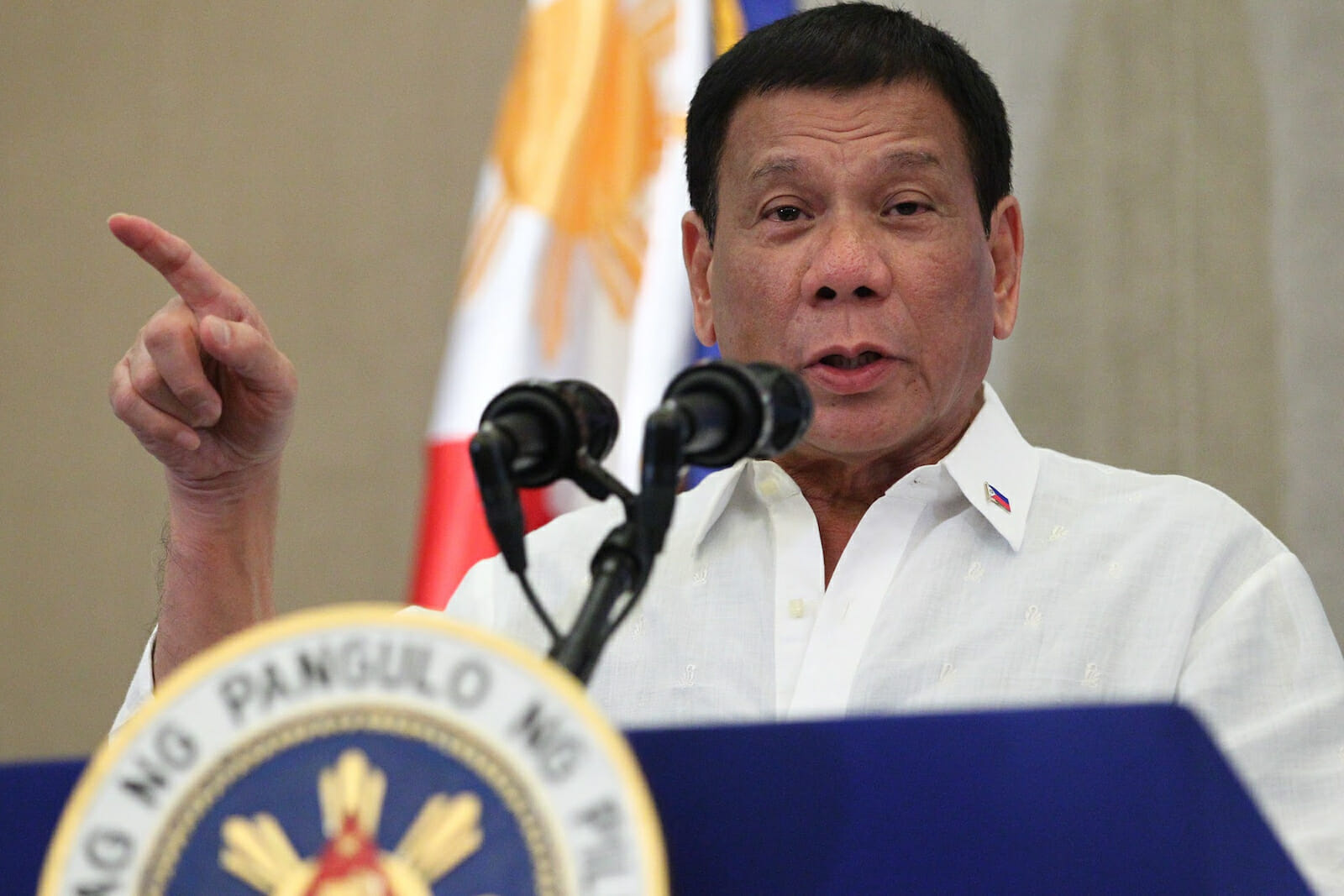
Is the U.S. Abandoning its Alliance with the Philippines?
While many articles have appeared in the Western press criticizing Rodrigo Duterte, the Philippines firebrand president, and his dalliance with China, few have seriously examined the United States’ failure in living up to its obligations to the country under the Mutual Defense Treaty (MDF).
With the refusal of the United States to honor its obligations to the Philippines, Rodrigo Duterte has attempted to mitigate the damage to his country’s sovereignty, by trying to work with a much larger and aggressive nation. The criticisms by the Western press are not valid, and do not take into account the geopolitical realities faced by the Duterte government caused by the abrogation of the MDF provisions of Article IV and V by the United States.
Since the construction of “artificial islands” in the South China Sea by China in the exclusive economic zone of the Philippines (EEZ), the United States has made excuses that the construction of these illegal islands does not constitute a breach of Article IV and Article V of the MDF.
For reference, Article IV states, “Each Party recognizes that an armed attack in the Pacific Area on either of the Parties would be dangerous to its own peace and safety and declares that it would act to meet the common dangers in accordance with its constitutional processes. Any such armed attack and all measures taken as a result thereof shall be immediately reported to the [UN Security Council]. Such measures shall be terminated when the Security Council has taken the measures necessary to restore and maintain international peace and security.”
Additionally, for context, Article V states, “For the purpose of Article IV, an armed attack on either of the Parties is deemed to include an armed attack on the metropolitan territory of either of the Parties, or on the island territories under its jurisdiction in the Pacific or on its armed forces, public vessels or aircraft in the Pacific.”
Before any articles can be invoked, the signatories to the MDF must comply with Article I, which states that the aggrieved party must first attempt to settle the dispute peacefully through the United Nations. The Philippines did this with its lawsuit against China in The Hague in 2016. According to the Law of the Sea Convention (UNCLOS), the court ruled that China had violated the Philippines’ EEZ. China refused to acknowledge the International Court’s jurisdiction at The Hague, even though China is a signatory to UNCLOS. By pursuing peaceful means of resolving the incursion of China into its EEZ, the Philippines has satisfied the requirement of Article I, before invoking Articles IV and V.
In 2012, there was a confrontation between the Philippines and China with its fishing vessels entering and illegally harvesting fish in defiance of the Philippines EEZ. The Philippine Navy dispatched the BRP Gregorio Del Pilar to detain and seize the fishing catch of the Chinese fishing vessels. In retaliation, China dispatched its own vessels which blocked the Gregorio Del Pilar from leaving the lagoon. A standoff ensued and both sides turned to the United States to mediate the dispute. According to numerous Filipino officials, they were told by the United States envoy Kurt Campbell that the Chinese had agreed to withdraw their vessels if the Philippine Navy would withdraw their vessels.
In an email from Campbell to Hillary Clinton, the U.S. Secretary of State at the time, Campbell wrote: “To create the right environment we need Chinese though to follow through on their commitment to ‘de-escalate’ over Scarborough. We put a lot of pressure on the Phils to step back and if anything it looks as if the Chinese are consolidating their position – and watching us carefully.”
The United States brokered an agreement with China and the Philippines to ease tensions between the two nations, and when China reneged on the agreement, the United States did nothing. With this type of behavior on the part of the United States, how could Duterte trust the word of the United States regarding its commitment to the MDT?
Under the Biden administration, things do seem to be turning around. President Biden has sent numerous warships into the South China Sea to show its resolve in keeping the South China Sea free of Chinese domination.
The United States is now considering allowing the Philippines to purchase U.S. fighter jets, as well as advanced missiles. However, it will take more than consideration to persuade Duterte that the United States is willing to live up to its obligations under the MDT.

